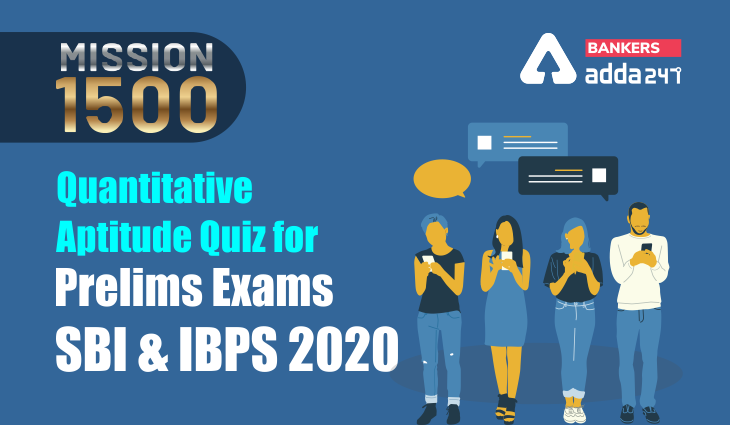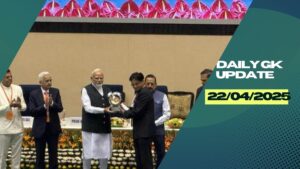Directions (1-5): Read the paragraph given below and answer the following questions.
There are four schools – A, B, C & D. Ratio of total students of school – A to school – D is 2 : 3 and total students in school – B is 500 less than total students of school – A and ratio of total students of school – C to school – B is 16 : 7. 60% & 75% of total students of school – A and school – C respectively plays games and number of students playing games in school – C is 30 more than that of school – D. 210 students from school – B do not play games and total number of students who play games in all four schools is 3580.
Q1. Find the ratio of students who play games in school – A & C together to total students in school – D.
(a) 15 : 16
(b) 16 : 15
(c) 14 : 23
(d) 23 : 14
(e) 16 : 19
Q2. Students who did not play games in school – C & D together is approximately what percent more or less than the total students in school – A?
(a) 14%
(b) 15%
(c) 17%
(d) 16%
(e) 18%
Q3. Find the difference of average number of students in all schools who play games and average number of students in all schools who did not play games.
(a) 450
(b) 465
(c) 495
(d) 420
(e) 445
Q4. If 80% of the boys in school – C play games and ratio of boys playing games to girls playing games in school – C is 3 : 2, then find girls playing games in school – C is approximately what percent of total girls in school – C?
(a) 59%
(b) 40%
(c) 62%
(d) 69%
(e) 30%
Q5. In school – E, games playing students are 30% more than games playing students of school – C. If difference between games playing students and students who did not play games in school – E is 800, then find difference between total numbers of student in school – E & D.
(a) 520
(b) 620
(c) 590
(d) 550
(e) 470
Directions (6-10): Study the passage given below and answer the following questions.
In PCM section of a school, there are 800 students. Data below gives information about students who passed or failed in 3 subjects (Physics, Chemistry & Math). Ratio of students who got passed in only Physics, only Chemistry and only Math is 6 : 5 : 10. Students who passed in all three subjects together are equal to students who passed in only Chemistry. Students who passed in only Physics and Chemistry together are equal to students who passed in only Chemistry and Math together. Students who passed in only Physics and Chemistry together are 50% of students who passed in only Physics. Students who passed in only Physics and Math together are 20 more than students who passed in only Chemistry and Math together. Students who failed in all 3 subjects together are 80.
Q6. Find number of students who failed in Physics.
(a) 450
(b) 480
(c) 400
(d) 440
(e) 430
Q7. Students who passed in only Math are what percent more or less than students who passed in only Chemistry?
(a) 100%
(b) 150%
(c) 50%
(d) 75%
(e) 125%
Q8. Find number of students who passed in at least two subjects.
(a) 320
(b) 300
(c) 240
(d) 270
(e) 350
Q9. Find the number of students who either passed in Chemistry or in Math.
(a) 600
(b) 450
(c) 480
(d) 540
(e) 550
Q10. Students who passed in all three subjects together are what percent of students who failed in all three subjects together?
(a) 140%
(b) 110%
(c) 125%
(d) 95%
(e) 145%
Directions (11-15): Read the given information carefully and answer the following questions.
Aayush has two daughters (Sneha and Neha) and two sons (Vivek and Vikash). Present age of Aayush is equal to the sum of present age of both the sons and 125% of the sum of present age of both the daughters. 8 years ago, Vikash was 20 years elder to Sneha who was that time 16 years younger to her sister. 10 years ago, ratio of age of Aayush to that of Vivek at that time was 3:1.
Q11. Find the ratio of age of Neha four years later to that of age of Vivek ten years later?
(a) 2 : 1
(b) 1 : 2
(c) 1 : 1
(d) 3 : 2
(e) 2 : 3
Q12. Find the average of present age of all the five members?
(a) 39.6 years
(b) 39.4 years
(c) 38.8 years
(d) 38.4 years
(e) 39.2 years
Q13. Find the difference between sum of present age of Vivek and Vikash together and the sum of present age of Sneha and Neha together?
(a) 14 years
(b) 21 years
(c) 18 years
(d) 20 years
(e) 12 years

Q15. If ratio of age of Aayush’s wife four years ago to that of her eldest child four years ago was 5: 3 then find the difference between age of Aayush and that of his wife 15 years hence?
(a) 4 years
(b) 10 years
(c) 5 years
(d) 6 years
(e) 8 years
Practice More Questions of Quantitative Aptitude for Competitive Exams:
| Quantitative Aptitude for Competitive Exams |
Quantitative Aptitude Quiz for Prelims Exams- SBI & IBPS 2020- 8th December |
Quantitative Aptitude Quiz For Prelims Exams- SBI & IBPS 2020- 7th December |
Solutions







Practice with Crash Course and Online Test Series for IBPS Clerk Prelims:
- Bank Test Pack Online Test Series (12 Months)
- IBPS PO and Clerk Prime 2020-21 Online Test Series
- SBI PO Prime 2020-21 Online Test Series
Click Here to Register for Bank Exams 2020 Preparation Material




 GA Capsule for SBI Clerk Mains 2025, Dow...
GA Capsule for SBI Clerk Mains 2025, Dow...
 The Hindu Review October 2022: Download ...
The Hindu Review October 2022: Download ...
 Daily Current Affairs 22nd April 2025, I...
Daily Current Affairs 22nd April 2025, I...





